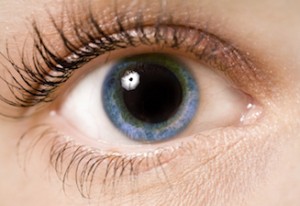Overview
At the Risk Communication Laboratory, we utilize commercial marketing techniques to create and test highly targeted health messages on various public health topics and health decisions. Below is a description of how we use Perceptual Mapping and Vector Message Modeling to develop health messages and materials for our research.
Additionally, we monitor the physical and psychological effects of messages on our audience using various measures, including:
- Eye-tracking
- Pupil dilation
- Physiological responses
For a deeper understanding of our methods, read this article or listen to this podcast on our methods
Perceptual Mapping
- Perceptual mapping methods use Multidimensional Scaling (MDS) analysis. This creates 3D graphic representations of how an audience conceptualizes a decision.
- We then use Vector Message Modeling techniques to understand how to “move” the group toward the decision we’re interested in. This provides information on the most likely ways to persuade an audience to make that decision.
- Perceptual Mapping is similar to how marketers persuade consumers to purchase products, with the distinction that we focus on public health decisions.
If we can get someone to “buy” a certain brand of soda, we can also motivate them to “buy” a colonoscopy.
This video explains the basics of how perceptual mapping works, and how we can use that information to change behaviors

How It Works:
- Multidimensional Scaling (MDS) analysis is used to display relationships between a set of elements such as medical treatments, their perceived risks, and benefits.
- Respondents rate statements on a 0-10 scale, such as “The treatment for HCV is easy to take and cures quickly” or “The treatment for HCV will cause a lot of side effects.” These statements are designed to explore barriers and beliefs about decision-making or behavior change.
- Multidimensional Scaling software converts scaled judgments into distances, creating a perceptual map that visually represents how elements are related to each other as well as the group (“self”).
- The software then calculates “vectors” in how to move that self towards the decision. These become the key message strategies for the campaign or intervention.
- This method can also be used with segmentation analysis – we can compare maps and vector message models to see how messages are similar or different to understand how best to target interventions.
This approach ensures that we don’t overwhelm our audience with information. Instead, we highly target messages based on the audience’s existing conceptualization of risks and benefits. Just like marketers, this strategy allows us to only address things that will be persuasive to an audience.
Example of Vector Message Modeling:
Our software is used to guide the mathematical vector resolution process (arrows in the map), helping to move a group toward a desired behavior, such as using PrEP for HIV prevention. The concepts identified in the perceptual map then form the basis for the targeted messages in the campaign.
Psycho-Physiological Measures
To assess the physical and psychological effects of messages, we use various psycho-physiological measures, including:
- Eye – Tracking
- Pupil Dilation
- Physiological Responses
The RCL uses eye tracking technology to ensure that health messages are designed to be accessible for individuals with varying literacy and numeracy levels.
- Eye tracking is extensively used in marketing research to understand how messages and materials are perceived by audiences.
- Eye movements indicate attention, helping to gauge how information is processed. This provides unique insight into consumer understanding of health communication, especially when messages involve both visual and textual elements.
- This tool helps us understand how individuals process information and whether they need to re-read sections due to literacy challenges.
The following videos and text reference material from an article written by Dr. Sarah Bass entitled “Use of Eye-Tracking and Gaze Pattern Analysis to Test Health Messages in Low-Literacy Groups“
![]()
Eye-tracking was used on a project that developed literacy–appropriate education about bioterrorism for low-literacy adults. Eye tracking output can clearly differentiate whether an individual is reading text as expected or if they instead have to read and then re-read sections because of literacy ability. If presented with material that is above literacy and/or numeracy levels, eye tracking can be used to show areas where individuals have difficulty accessing the content, which can then be related to other outcome measures.
See these videos:
The RCL uses pupil dilation technology to measure a participants’ interest or attention to information.
- As a person’s interest/attention increases, pupil dilation increases.
- This is true for both emotionally pleasant and unpleasant stimuli.

The RCL uses physiological response technology to measure the extent to which the message is having an emotional impact on the participant.
- Physiological Responses include:
- Heart Rate
- Body Temperature
- Skin Conductance or Sweating
- EEG Brain Response Patterns
- ]These physiological measures can be simultaneously assessed with the eye-tracking/pupil dilation.
- This is especially useful in perceived high risk or high fear situations, such as bioterrorism or disease outbreaks.




